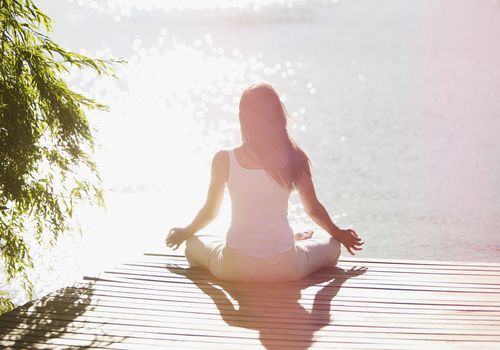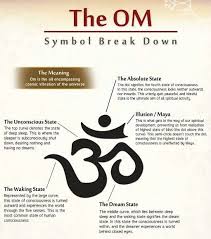
Beginner's classes will introduce you to basic poses such as Tadasana and Side Angle. After practicing these poses for a few minutes, you'll feel confident enough to move onto more advanced versions of these poses. The balancing exercises can seem daunting for some beginners. This article will show you how to do the most important poses. You can balance in a beginner yoga class by reading this article.
Tadasana
Tadasana is a key yoga pose for beginners. This is a great place to practice mindfulness throughout the class. To get the best from this pose, keep your feet apart at hip width and bring your hips towards the waist. You will also need to keep your fingertips parallel to the bones of your pelvis and in line to your second toe. Then, take a few seconds to hold the pose. You can eventually move on to other poses but keep your feet apart and continue to move between them.
The benefits of Tadasana are many. First, Tadasana makes a good beginning pose. It demonstrates how to align your body properly and uses props to correct any posture issues. Once your students have stayed in Tadasana, for at least one min, you can move on and do other poses. After some time, you will be able to plan a full sequence of yoga around Tadasana.
Forward Fold
Your spine will curve and your knees will bend during your first Forward Fold for Beginners class yoga lesson. Your thoracic spine is already in a kyphotic curve, and the forward flexion you are asked to do only slightly moves it towards neutral. While many yoga instructors will tell you to go as low as possible, without benting your spine, you should still extend your arms as you descend.

A wall can be used to assist you in your forward fold, especially for beginners. To help keep your back straight while keeping the distance between you and your feet equal, you can hold onto the wall with your hands. A wall support is also helpful for tight hamstrings. You can also keep your knees flexible. After a few repetitions, you'll be able to remove the wall support and do the Forward Fold all by yourself.
Side Angle
Side Angle yoga is a great way to learn. Because of their tight torsos, beginners often find it difficult to do this pose. This issue can be solved by resting an elbow on your front knee. This will help relieve the tension in your torso while strengthening your knees. Here's a step-by-step guide to Side Angle yoga for beginners. These tips will help you achieve a side angle pose that is safer and more comfortable.
Extended Side Angle Position: This position opens the side of the body and energizes spine. This pose will strengthen your hips. If you are unsure whether or not to begin with this pose, start with Warrior II. Next is Reverse Warrior II. Finally, do a Prayer Twist. Your flexibility will amaze you! Hopefully, Side Angle yoga for beginners will become your new favorite!
Warrior 2,
Warrior 2 is an easy yoga pose. However, many beginners make incorrect alignments in this pose. For maximum benefit, you should engage your core while drawing your tailbone to ground. You can also extend your spine by extending your spine. Remember to keep your front foot straight. You can learn the correct way to do the warrior pose by following the instructions below. You can then move on to more challenging variations.
Warrior 2 poses are great for improving balance and stamina. You can tone your thighs and core muscles by holding your body in a lunge position. This pose can also be used to strengthen your arms as well as your lower back. It also strengthens your ankles and the arches of your feet. It is best to practice the posture on a yoga rug before you attempt it. Listed below are a few tips to improve your alignment.
Relaxation pose

The final relaxation pose should be taken at the end a beginner yoga class. They should place their hands on the floor and let their toes hang down. This posture promotes surrender, and allows the body, mind and spirit to settle into earth. It should feel weighty like the earth. Once the pose is completed, it will help students to calm their minds.
The classic yoga pose of the triangle is for beginners. However, it can be challenging depending upon the student's level. In this pose, the knees should be positioned hip-width apart. You should stretch your upper body out with your shoulders relaxed, and your spine lengthened. It is important to take deep, slow breaths. After mastering this pose, students can practice it at home or on their own.
FAQ
How can one determine if they have a mental health condition?
An individual may be diagnosed if they experience symptoms that disrupt their daily activities. Symptoms of mental illnesses vary from person to person. The most common signs are: sadness and anxiety; feeling guilty, hopeless; lonely; depressed; confused; worthless; guilty, suicidal.
A person can also be diagnosed as having a mental disorder if they fulfill at least three of the criteria listed below.
-
Disturbed feelings or thoughts
-
Disturbed behavior
-
Disturbance in functioning
-
Reduced ability to relate to others
Here are five ways to improve your emotional and mental health.
-
Exercise - It improves brain function and raises energy levels.
-
Sleep – Getting enough sleep can help reduce anxiety and stress.
-
Nutrition – Eat healthy foods, such as fruits or vegetables, to keep your body strong.
-
Meditation – Regular meditation can reduce stress and anxiety.
-
Socialization: Spending time together with family and friends, keeps us happy.
Why is mental health important for students?
Students' mental health is crucial because it allows them to be focused on school and excel academically. If you don't feel good, you won't be able to perform well in school. Students suffering from depression are more likely to miss class, which can lead them to get poor grades. This could lead to students dropping out of high schools and eventually going to college.
You should talk to your parents and teachers if you have depression. They will help you get the treatment you need.
It's important to note that not everyone who struggles with depression needs medication. Talk therapy is very effective for many people. A counselor is a great option for anyone who wants to seek help.
Statistics
- Appropriate nutrition and exercise are likely among the most efficacious and cost-effective positive mental health interventions. (ncbi.nlm.nih.gov)
- More than 40 million adults in the United States have an anxiety disorder, but less than 37% of people seek mental health treatment for their symptoms. (talkspace.com)
- More than 50% will be diagnosed with a mental illness or disorder at some point in their lifetime.3 (cdc.gov)
- Similarly, for positive mental health, there is likely to be substantial agreement about some typical components (e.g., resilience to stress) 6, and controversy about more atypical components (e.g., career consolidation). (ncbi.nlm.nih.gov)
- Similarly, while there is some agreement about the boundaries of typical mental disorders 2, there is likely less agreement about those for positive mental health. (ncbi.nlm.nih.gov)
External Links
How To
How to manage stress
Stress is part of everyday life. But, when we feel stressed we want to find ways that we can relax and relieve our tension. Stress can impact every area of your daily life. It can cause physical problems such as headaches, neck pain, back pain, stomach aches, heartburn, diarrhea, constipation, insomnia, depression, anxiety, and muscle spasms. You may even develop ulcers if you're under chronic stress.
There are many options to reduce stress. Exercise increases endorphin release, which can make you happy and relaxed. Meditation reduces stress by slowing down and deepening your breathing. Yoga is another great way to help reduce stress and improve overall health.
Learning how to manage stress and eliminating it completely is the best way to manage it. Ask someone who has experience to guide you.